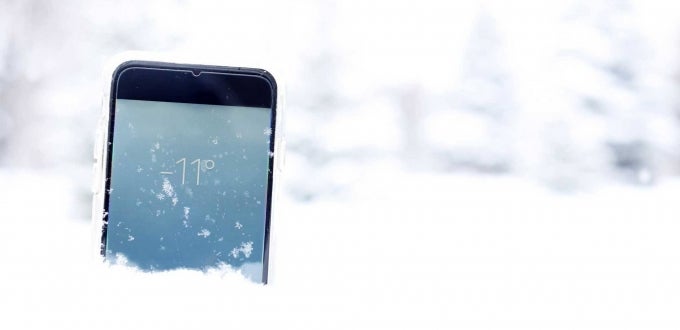You are here
Everything to Know About Winter Tech Safety

The moment of stepping into a pool with your phone in your pocket is a moment we all dread. The same goes for if your phone falls into the snow, or your laptop accidentally sits in your trunk overnight in freezing temps. With the latest tech advancements, this moment doesn’t necessarily mean your device is toast … but it doesn’t mean it’s completely safe, either. Keeping your beloved technology safe is easier than you think. You just need to follow a few precautions to keep your tech safe during the winter season.
Never Leave Tech in an Unheated Car
You almost always take some device with you when you’re on the go, like your phone or laptop. During extreme temperature drops, leaving your devices in an unheated car (or the trunk, where the heat doesn't reach) can cause serious, long-term damage to your gadgets. If your device is exposed to the cold for a long time, it can ruin the battery, requiring a replacement. Freezing temperatures can also cause permanent damage to the screen, resulting in delayed touch screen reaction … or worse – a rigid screen that spontaneously shatters. So put it in an insulated carrying case, warm up the car before getting in, and keep tech items in the heated area of your car. If you need to leave it behind, keep the case under a blanket in the warmest part of the car to keep it as warm as possible.
Warm Up Devices Slowly
If your device gets left in the car or sits on your front porch after being shipped, your instinct may be to rush it inside and put it in a warm spot. However, bringing it to room temperature too quickly can cause condensation to build up inside the case. This can cause long-term damage to the device, especially its CPU. It’s better to allow your tech to warm up to room temperature slowly. If the device was exposed to a very low temperatures for a long time, you may want to put it in a cool place (like the basement or beside a window) before bringing into a warmer spot in the home. Don’t power it on until it has reached room temperature.
Protect Your Phone During Outdoor Winter Activities
Winter is full of fun activities to enjoy, like skiing, sled riding, snowball fights, and making snowmen or angels. But these activities become way less fun if your phone is ruined in the process. Turn your device off or put it in power save mode while outdoors. It’s important to also keep it in a waterproof pouch, even if you don’t plan to roll around in the snow. You can use a Ziploc bag in a pinch, but they can be unreliable and rip open. Many retailers (like Amazon) feature reusable, waterproof phone pouches for great prices.
It’s important to note that although waterproof pouches keep your phone safe from water damage, it doesn’t protect against freezing temperatures. So you should still keep it inside an insulated pocket in your coat so it doesn’t get too cold. Pockets on the inside lining keep your phone closer to your body heat, which is even better!
If Your Phone Does Get Wet, Here’s How to Save It
If you find yourself with a wet, freezing cell phone, all is not lost. Here’s how to maximize your chances of saving it:
- First, remove your phone from the snow, slush, or wintery wet puddle immediately. Although obvious, it’s very important your device doesn't sit in the snow for long.
- Once it’s removed, turn it off immediately so the battery isn’t damaged, then check in charging inserts and around the edges for water damage.
- After powering off your device, if you have a removable battery (iPhones unfortunately do not), remove and dry it. This gives your device a better chance of survival.
- If you see water in the ports, seems, and crevices, switch on a vacuum. Holding your device at a reasonable distance from the vacuum, begin to suck out the water from the insides of it, focusing on the charging insert, headphone jack, and speaker. (Note: do not use a hair dryer! This blows water into the device and the heat can cause damage.)
- Finally, search your house for silica packets (the little baggies that are labeled “Do not eat”). If you don’t have any silica, the old-fashioned rice-in-a-bowl trick works too, just not as well. This last step requires patience. The longer you let your phone recover (while switched off), the better chance it has to be salvaged. It’s recommended a phone is left off for at least 72 hours before it’s turned back on.
These next few frigid months can be filled with lots of fun in the snow, but only when done safely. Keep your technology safe by using the tips above, and you’ll be set to go this winter. For more tips, check out Technuovo’s article, Top 5 Tips If Your Smartphone Falls In The Snow and ProActive Technology Group’s article, 3 Dangers of Keeping Your Electronics in the Cold.
– By Claudia Huggins, Pitt IT Student Blogger